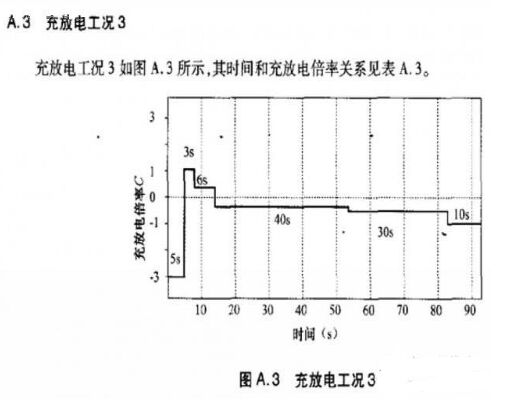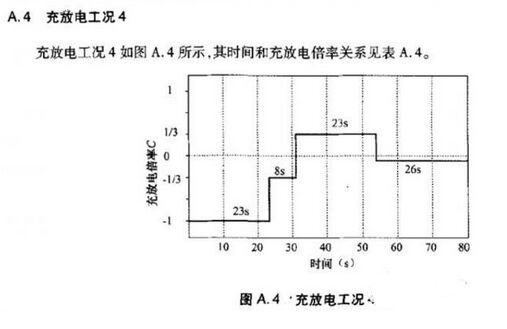Depth analysis SOC accuracy verification method
Everyone knows that the core of the battery management system (BMS) is the upper application algorithm, and the core of the algorithm is the SOC estimation. Therefore, the national standard QC/T897-2011 "Technical Conditions for Battery Management Systems for Electric Vehicles" naturally emphasizes the accuracy test of the state of charge (SOC). This can be seen in the total of 13 pages of documents with up to 6 pages which are related to SOC accuracy. The requirement of the national standard for SOC estimation accuracy is that the error is not more than 10%. However, the verification method given by the national standard has the following problems:
This article refers to the address: http://
1. The national standard only requires testing the SOC accuracy of 2 points.
The national standard proposes to find a point test in each area where the SOC is greater than 80% and less than 30%. I don't think this is enough. Is it true that two points are accurate to ensure that all work points meet the requirements, obviously not.
When I design the Verification Plan & Report for DIG&R for BIG3, I require SOC to be verified from 100% to the cutoff voltage (SOC is only 1-3%), even for SOC work. Hybrid vehicles (HEVs) with a narrow range are no exception. This is because in an unexpected situation, the SOC is likely to be out of the normal working range. In case the SOC is not in the scope of work, it is not allowed to lose control.
Remember to do the SOC back-calculation for each point when doing the Volanda BMS simulation verification, find out which point from the beginning to the end (all points with errors exceeding 2.5%) have the largest SOC error, and analyze why The SOC at this point is relatively large.
2, the choice of working conditions
The national standard gives four working conditions and calls it a “typical†charging and discharging condition. The following conditions are shown in the figure below:


Obviously, none of these conditions are close to actual conditions. Because the current in the actual operating conditions looks like noise, it is impossible to be a straight line, so these conditions are not "typical".
Secondly, the two longest working conditions given by the national standard are 80 seconds and 90 seconds. The national standard said that any one working condition can be selected and continuously cycled 10 times to check the SOC. How long is the continuous cycle 10 times? The longest one is only 90 seconds, the cycle is 900 seconds, and it is only 15 minutes. In this 15 minutes, the SOC only changed by less than 10%. What does this mean? Assuming that the current sensor is broken during the working condition test, the measurement is always zero, and the BMS can pass the accuracy requirement of the national standard SOC. Because the SOC you calculated is unchanged. Although not correct, the error is definitely less than 10%. Therefore, the condition given by the national standard to verify the accuracy of the SOC is completely meaningless.
When General Motors (GM) made Volanda, the conditions we chose for verification were all actual acquisition conditions. In particular, the SOC calculated by the Anshi integral and the real-time estimated SOC have significantly different operating conditions. In Chrysler, since the prototypes are not yet available, there is no actual working condition. We use the appropriate conditions of other cars to simulate the worst case.
Perhaps, some people will say that this is not the working condition of a particular car, and it is not realistic. However, an algorithm must be able to work under all conditions and must be able to work properly under any theoretical conditions.
I gave the supplier 5 working conditions, 3 typical working conditions, and 2 enlarged working conditions. For example, the power of the US06 operating condition is multiplied by 1.8 and appropriately limited (the US06 operating condition test is to investigate the emission of the test sample at high speed and high acceleration). At the time, no BMS supplier in the world was able to meet Chrysler's requirements in terms of accuracy. Later, I was told that someone in the American Society of Automotive Engineers (SAE) reported that US06x1.8 can contain more than 95% of the most aggressive (ggressive) conditions. Later, when I was working in a domestic company, the BMS software director of the German branch of the company specially asked me from Germany to Zhejiang. My SOC algorithm is the same for high current and small current.
It can be seen that the online estimation of large current SOC is not easy. The national standard should also refer to the Chrysler model. In the absence of sufficient conditions, the typical operating conditions are appropriately amplified. Of course, you don't have to use the same intense conditions as I do.
3. Verification method of SOC accuracy
The national standard said that after the experiment was completed, it was "rested for 10 minutes" and then discharged to zero. Finally calculate the SOC true value. What is the purpose of standing for 10 minutes? It doesn't make sense to me. Because in these 10 minutes, if there is a measured amount, it is the terminal voltage. However, the voltage is not used in this verification method. If you want to get the true open circuit voltage (OCV) of the battery, the 10-minute rest time seems to be too short. Especially for lithium iron phosphate batteries, this reflects the fact that the national standard seems a bit overwhelmed.
Secondly, for the accuracy verification method, the national standard requires that all the power be discharged to verify, which is of course a method, but this method has no practical significance, because it is impossible to discharge the light on the road. So, driving on the road, you can't know how big the error is, because you don't dare to put the light on the road to check the accuracy of the SOC.
At present, almost all SOCs in China use the Ansue integration method. The An-Time integration method needs to know the starting point of the SOC. This starting point is generally obtained by an open circuit voltage (OCV). However, the national standard does not mention OCV and its relationship with SOC from beginning to end. This relationship is the most important relationship in the entire BMS relationship. How can the national standard not be mentioned at all?
As the core of the BMS, in addition to the SOC, there are maximum charge and discharge power prediction (SOP) and health status (SOH). The national standard did not mention perhaps because the country is still a good solution. Recently, some experts have seen the use of big data to solve SOH. In fact, we can do real-time online estimation on Volanda. At that time, the fashionable word of big data was not invented yet. Big data is good, but it doesn't have to be where it is.
Why do you need to use SOP? SOP has two functions, the first to limit power and protect the battery. Keep the battery working for a given working interval forever. Therefore, the protection of the battery is not based on the so-called primary protection, secondary protection. It depends on SOP. Protection is essential. However, it is not used under normal circumstances. The second one, give full play to the potential of the battery, for example, a lot of domestic cars, BMS in order to protect the battery, the battery can output 50 kilowatts, you only let it output 40 kilowatts, is to protect the battery, but sacrificed 10 kilowatts, which 10 Kilowatts may be important for your power performance.
The same is true for charging. If you are braking, it can absorb 50 kilowatts of power when you recycle it. You only need to absorb 40 kilowatts of power, and your efficiency will be reduced, so accurate SOP is also very important. Especially in the case of battery aging or low temperature and hybrid power with limited output power, SOP is particularly important. Why is the hybrid power consumption in foreign countries low, in addition to the choice of a dedicated engine, you can also choose a smaller engine to achieve the same dynamic performance. Among them, there is SOP credit. Some of our experts and academicians often mention the need to develop hybrids including incremental programs. These references are all right. However, there is no strong core technology, and even if the world's output is the first, no one cares. It can only be self-entertainment.
iPhone 7 Battery Pack, OEM Li-ion Polymer 3.8v 1960mAh with 1 year warranty. iPhone Battery Pack with brand new cell 0 cycle,customerized protection board and FPC, raw materials as 100% pure cobalt not ternary materials. All items have passed CE,RoHS,MSDS,UN38.3 and IEC 62133 Certification.Daily production for iPhone Battery Pack 100-150,000pcs, defective rate below 3‰.
iPhone 7 Battery Pack
Nominal voltage: 3.8V
Limited charge voltage: 4.35V
Capacity:1960mAh (7.45whr)
Cell size: 33x39x93mm
iPhone 7 Battery
iPhone 7 Battery Pack,iPhone 7 Battery Pack Replacement,Battery Pack For iPhone 7,iPhone 7 Lithium-Ion Battery
Shenzhen Aokal Technology Co., Ltd. , https://www.aokals.com